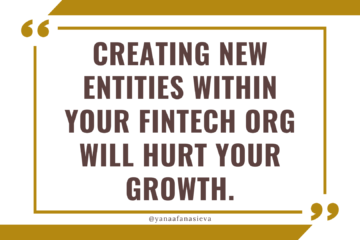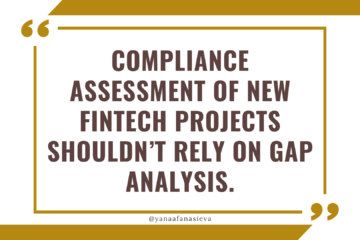FinTech AML Setup – Customer Categories and Tags
Even if you are in the early stages of starting a FinTech company, you should be thinking about how you are going to categorize and segment your customers. These tags or categories, later on, will lay the foundation of your ongoing monitoring program.
Here are a few tags/categories/attributes I recommend:
- Natural persons vs. legal entities (usually based on self-declaration)
- Private accounts vs business accounts
- High risk versus normal risk (and PEP vs non PEP)
- Customer support or customer experience flags: VIP customers, high dispute rate customers, customers with pending issues (e.g. promised to send documents, etc).
- Industry category for merchants (I recommend using MCC codes, even if you are not yet in the cards business), because some industries are definitely riskier than others or require certain settings (e.g. airlines or concerts with long delivery times, financial services, sales of alcohol, gambling, adult services…)
- Insider accounts – so that you can tag your insider accounts (including accounts created for training or testing)
- For investment activities you may need to assign eligibility criteria for certain products or services, for example, you may need to tag professional investors, or investors eligible for certain services types
- Linked Accounts (based on shared devices, shared addresses, shared beneficial owners, or shared payments instruments, and some other known shared attributes that you are able to detect).
I guarantee you will definitely thank me for implementing these customer flags before your first AML audit because you will be able to save a lot of time on generating and processing manual reports or otherwise producing manual evidence of your compliance monitoring program.
Sometimes people ask me if they could just outsource all their KYC and onboarding tasks (including the tech solutions) and I do not think it was such a great idea. I strongly feel that FinTech or any other customer-facing startups should keep their onboarding and KYC processes in-house, at least during the first several years. Which is why building the tags and categories is so important.
Here are my main reasons:
- When you are a new or still emerging business, all the feedback you get from your first customers while onboarding them is gold for refining your product, and you need to listen to this feedback carefully with your eyes and ears wide open. This is how you learn that your product has glitches or that your links don’t work 😉 and that your app has a few bugs. You will also be able to get a feel about who is attracting, what kind of questions they have, and what is missing in your product features, website information, or brand messaging.
- Onboarding is not a mechanical process of simply getting people in and reviewing their documents at the lowest possible cost. Onboarding is a continuous learning process that must be integrated into your customer lifecycle – learning about who your customers really are, what do they want, where do they come from, and what their expectations are. If you don’t know who they are, you will have a hard time activating them, engaging with them, or making them listen to your messaging or transacting frequently.
Yes, large companies offering the same type of services over years, with a proven value proposition and well-documented workflows can benefit from outsourcing some of their compliance, onboarding, or customer support functions, simply because they are well past the intense learning curve and fine-tuning stage. For startups, onboarding and KYC is an essential part of the proof of concept validation and in my personal view, one of the most strategic processes. Why? – Because it’s not just about the customers you managed to onboard, it’s more about all the 50%-70% of the website or app visitors who started and never finished their registration process, because something was missing or not to their liking. If you don’t get your conversions right, it can make or break your business.
Just imagine – instead of running all kinds of manual extracts and reports once every two weeks you may have a dashboard that is tracking and displaying your customers’ activities in a nice automated dashboard based on these flags and some automated rules targeting these different groups of customers… Essentially, your compliance tools will be always working 24/7 and will just alert you when someone needs to pay attention. 😉
If you’d like to learn more about best practices for customers onboarding, download my FREE DIGITAL ONBOARDING GUIDE.

